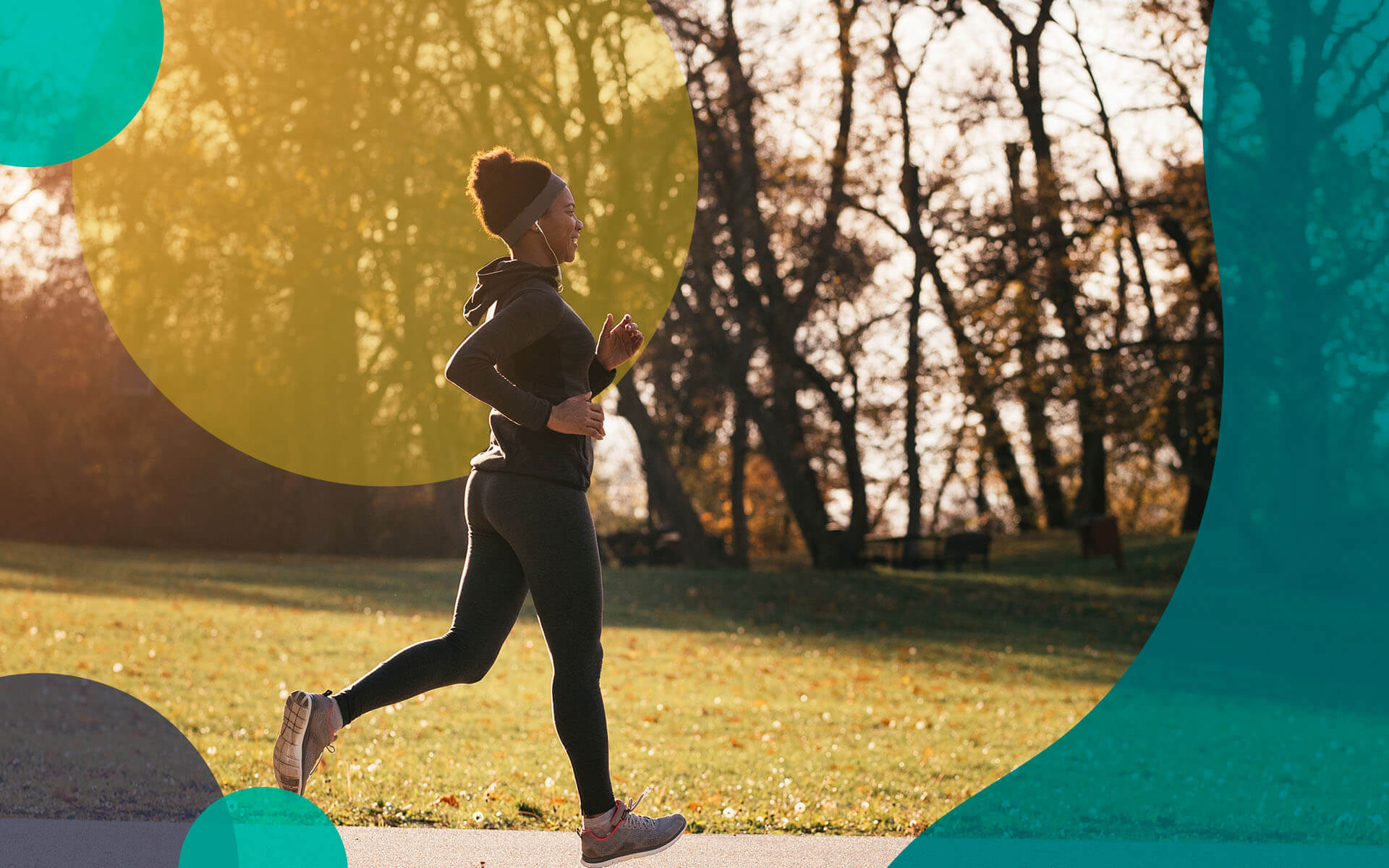
Body + Mind is reader-supported. We may earn an affiliate commission when you buy through some of the links on our site.
Were you born to run, or are you more of the “only if a bear is chasing me” sort? Both running and walking offer multiple advantages, including fat loss. Which one does the better job?
Although a calorie is a calorie and a mile is a mile, different things happen when you perform various exercises at the anatomical level. When it comes to walking versus running for fat loss, which one works best? Much depends upon you.
If you’re a runner, you’d probably rather battle a bear with one arm in a cast than endure a three-month stint on the disabled list. Some people look at aficionados of the sport strangely, but you can’t beat the endorphin rush. There are multiple advantages to running over walking for fat loss.
While it takes 15 to 20 minutes to walk a mile, you can run that far in approximately 10, even faster if your last name is Bolt. You do burn the same amount of calories when you cover equivalent distance and terrain. If you have the time, a leisurely stroll will still torch fat.
However, if you work two jobs and homeschool your kids during COVID, you might consider yourself lucky to find 20 minutes to spare in your day for exercise. Would you rather cover one mile or two? Even if you start at a turtle-like pace, you’ll probably want to speed things up as your cardiovascular fitness improves.
Some people live to compete. While there are plenty of solitary runners out there, you don’t see street shutdowns on race day for one or two folks.
It doesn’t matter if you enjoy the messy aspects of a Tough Mudder or you want to push yourself through one leg of an Ironman competition. You can sign up for anything from fun runs to 50K races to indulge your urge to seek the gold medal. You can even find virtual races to join during COVID-19.
Pounding pavement quickly sounds fantastic to the Type A and time-strapped. However, it doesn’t automatically win the race between running and walking for fat loss. Here’s why.
Your risk of injury shoots up considerably when you run, and this rule doesn’t only apply if you’re knock-kneed and trip over your feet. While walkers only face a 1% to 5% injury risk, it shoots up to 20% to 70% for runners.
Remember the moral of “The Tortoise and the Hare?” If you have significant weight to lose, consider walking better than running for fat loss. Ending up on the sidelines can cause you to add, not reduce, body weight.
Do you have any form of arthritis or other health concerns, like fibromyalgia or degenerative disk disease? While some runners claim their sport eases these conditions, many find the high-impact quality of running too painful.
Walking is one of the best forms of movement you can find. Many people can manage it with no pain, and it requires no special training or equipment. Does it top running for your fat loss? Let’s see.
Over time, the cartilage lining your joints wears down — it happens to nearly everyone with age. Therefore, you might find walking less painful on your hips and knees.
Excess weight, too, can make impact problematic. If you’re female and generously gifted up top, you might find that running gives you a backache. Walking, however, rarely presents problems.
It doesn’t matter if you rise and shine at 5 a.m. — if you go running on an August day in Phoenix, you will come home smelling like a stale corn chip. If you have to dash back to the office after a midday workout break, walking keeps you smelling fresher and helps you prevent wrinkling your colleague’s noses.
It doesn’t matter where you travel — you can always walk. You don’t even need to schlep along a pair of training shoes in your luggage. You can walk in nearly any shoes, although close-toed ones with sufficient arch support are best.
There aren’t many downsides to walking, but you should understand the following pitfalls.
Some weather is downright dangerous for outdoor treks. Most people wouldn’t dream of heading out in a blizzard while wind chills sink temperatures into the negative. Likewise, in arid climates, setting out minus sufficient water on a hot day can lead to dehydration.
What if you need a walker or crutches to get in your miles? You might find that your city sidewalks come scattered with hazards that make your stroll less pleasant. Seek parks with paved walking surfaces or head to an indoor location like a mall with flat, smooth flooring.
When it comes to walking vs. running for fat loss, both offer considerable advantages. The right one for you depends on your personality, time commitment and preference.